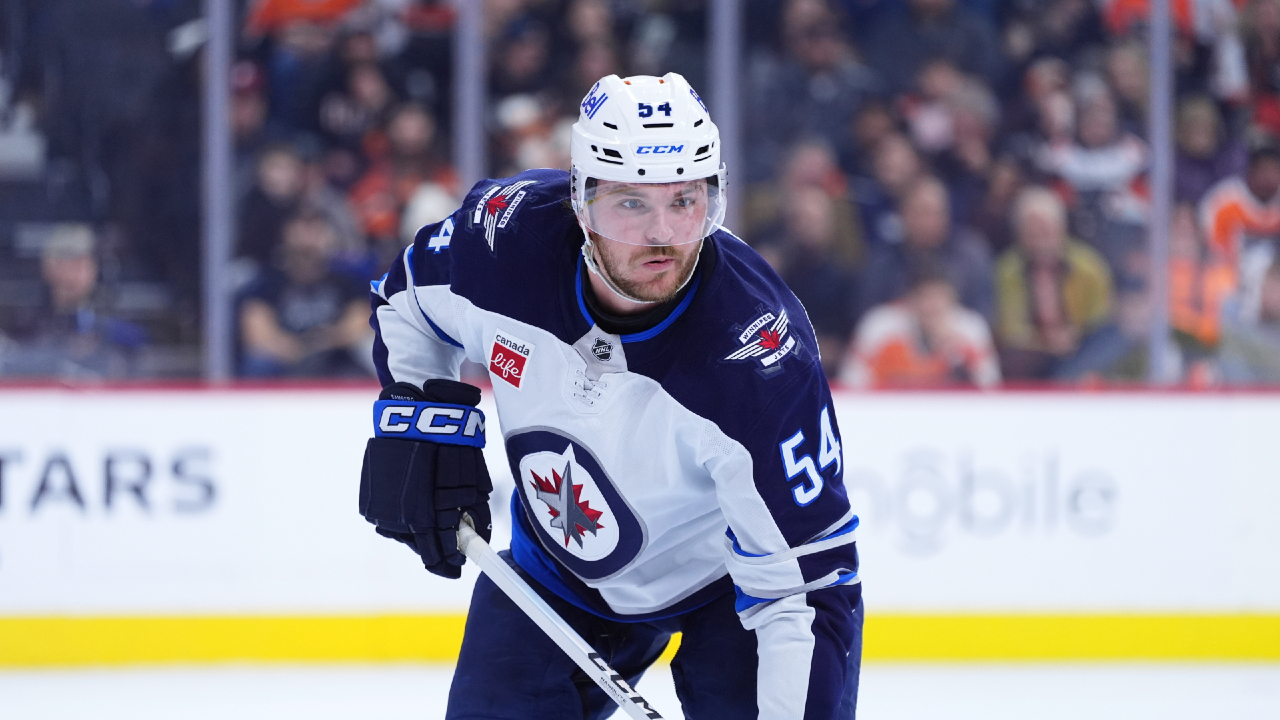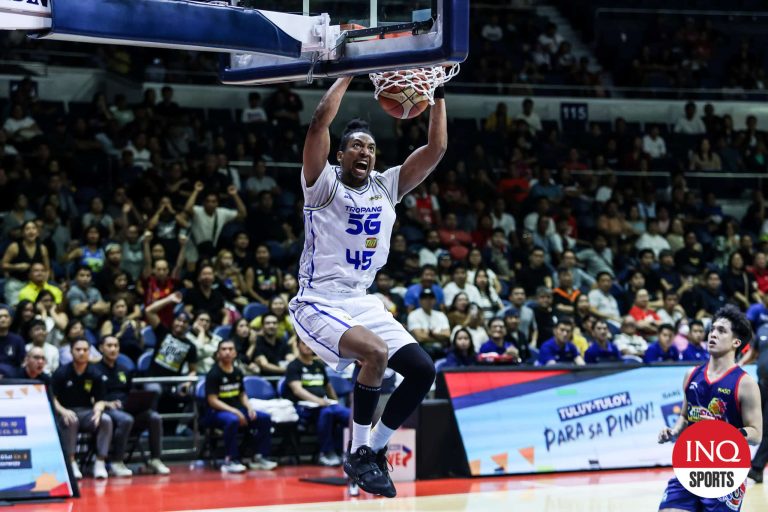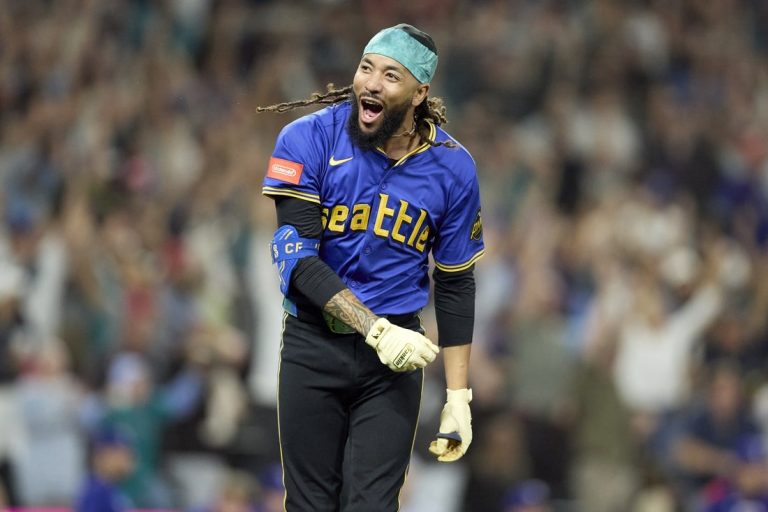The Friday Four is a collection of thoughts and information on some intriguing storylines from around the NHL. On deck this week is:
• Jets getting great value with Samberg’s extension
• Hurricanes bet on Blake
• Timmins gets a nice raise
• Is this Grubauer’s last chance?
Despite not winning the Stanley Cup, the Winnipeg Jets still took home a lot of hardware last season. Winnipeg won the Presidents’ Trophy with the league’s best record, and goaltender Connor Hellebuyck had a campaign for the ages, capturing the Hart, Vezina and Jennings trophies. Hellebuyck was the main reason for Winnipeg’s success, but the Jets would tell you those are team awards. Mark Scheifele, Kyle Connor, Josh Morrissey and a cast of others make the Jets one of the deepest teams in the league from top to bottom.
One name that doesn’t get nearly enough credit for making the Jets the force that they are is Dylan Samberg. Like most defensive defencemen, Samberg often flies under the radar when it comes to praise due to his game being built more around efficiency than flash. You won’t see Samberg on too many highlight reels, nor will you see his name appear on the scoresheet regularly, but he’s become an invaluable piece of Winnipeg’s blue line and the three-year, $17.2 million extension he just inked should be an absolute steal for the Jets.
Nobody plays tougher minutes for Winnipeg than Samberg. Paired with Neal Pionk for the majority of the 2024-25 campaign, the duo played 727 minutes together at even strength and allowed just 23 goals against, all while typically facing the opposition’s best line on most nights. Winnipeg also had 90 more scoring chances on the season than they allowed when the duo of Samberg and Pionk were on the ice. Samberg ultimately finished in the top-10 in the NHL when it came to plus/minus at plus-34.
Playing more of a shutdown role led to Samberg’s minutes also taking a massive jump last year. After averaging around 15 minutes per game in his first three seasons, the 26-year-old shot up to more than 21 minutes a night in 2024-25. Not to mention the Jets leaned on him heavily when it came to the penalty kill. No one played more shorthanded minutes per game on the Jets than Samberg last season, skating nearly two and a half minutes while a man down. Dylan DeMelo was the only other Jet to crack the two-minute mark each night.
Perhaps most impressive, though, is how Samberg’s absence impacted Winnipeg. Samberg missed 22 games last year due to injury and the Jets were significantly worse without him, going 11-9-2 when he wasn’t in the lineup. They were essentially a .500 hockey team. However, in the 60 games Samberg played, Winnipeg went 45-13-2. Plus, it’s worth noting that puck was going into the Jets’ net much more often without Samberg. Winnipeg allowed four or more goals 18 times in 2024-25 and seven of those games came when they were missing Samberg.
It’s such a luxury for the Jets to have somebody like Samberg on their blue line, as he helps all the other pieces fall into place. Morrissey gets to avoid more of the heavy minutes and is flourishing offensively playing with DeMelo. Pionk has someone next to him he can trust and has now scored 10 goals in two of the past three seasons. Thanks to the emergence of Samberg, the Jets have a top-four that can rival anyone in the league, all locked in at reasonable prices for the next few seasons.
It’s always going to be hard for a player like Samberg to get the recognition he deserves, though that could be changing. The gold standard right now for shutdown defencemen is Jaccob Slavin and he’s become so good that there were even some stating there should be an award for the best defensive blue liner. Slavin’s play at the 4 Nations made everyone take notice and while Samberg isn’t on his level quite yet, if his game continues to evolve, more and more people are going to start appreciating his play. He isn’t going to fly under the radar much longer.
It’s safe to say the Carolina Hurricanes have a lot of faith in Jackson Blake.
The Canes inked Blake to an eight-year deal worth $45 million last week, which includes some deferred money to get the AAV down a bit. It’s an interesting bet by Carolina, who currently have a boatload of great value contracts. Nobody on the team makes $10 million and with a rising cap, players like Sebastian Aho, Nik Ehlers, Seth Jarvis, Andrei Svechnikov, Logan Stankoven and Slavin are locked up for years at great numbers. The only contract you could really quibble with is Jesperi Kotkaniemi’s, as the Canes may never get adequate value out of that one, but you’d be hard-pressed to find a team without at least one questionable pact on the books.
Blake’s deal could end up joining the aforementioned group of borderline steals. When the $5.1 million cap hit kicks in for the 2026-27 season, the cap will be well over $100 million. That’s not a massive number to absorb if Blake can become a consistent 20-25 goal scorer. Also, the cap is going to keep going up, and the second half of the deal could look even better.
That said, there’s also the possibility that this deal backfires because of the term. Eight years is a lot to give a player that only has 81 games under his belt. Blake had 17 goals last season, which is a decent scoring rate and there’s reason to believe he can better that, but how many players could deliver that production playing with Aho and Jarvis for most of the season? It’s a very small sample size and the investment is a bit of a departure for the typically conservative Canes.
There’s no reason to believe Blake’s deal won’t age well at this point, though it still undeniably comes with some risk because the soon-to-be 22-year-old doesn’t have a significant track record just yet.
The Buffalo Sabres will hope to end their post-season drought in 2025-26 with some new faces on the right side of the blue line. Michael Kesselring is the biggest addition after coming over from Utah in exchange for JJ Peterka and then there’s Conor Timmins, who was acquired by the Sabres in June from the Pittsburgh Penguins.
Timmins, who has been traded twice since March, inked a two-year deal worth $4.4 million last week with Buffalo. The $2.2 million AAV doubles his salary from the year prior and even though it’s not a huge piece of the Sabres’ salary structure, it’s likely going to be something we’re going to have to wrap our heads around going forward with a rising salary cap.
At first glance, the deal seems a little rich for a 26-year-old defenceman now on his fifth team who has really only played close to one full season in the NHL. Now there is definitely some offensive upside to Timmins’ game and he can move the puck fairly well, but with a flat cap, he’d be hard-pressed to get anything close to $2 million. With the cap rising quickly, though, the number seems more reasonable, especially for the second year of the deal.
Next season, the cap jumps to $95.5 million, then the following year it will hit $104 million, before landing at a whopping $113.5 million in 2027-28. So, if we look at year two of the Timmins deal, he’s only going to account for 2.1 per cent of Buffalo’s cap. That isn’t a lot in the grand scheme of things and if you compare that to what 2.1 per cent of last year’s $88 million cap would be, you’re looking at around a $1.8 million contract. That seems a lot more reasonable for Timmins, but you can swallow the extra $400,000 if you’re the Sabres since you know the cap is climbing.
With a flat cap, we were used to seeing skaters fighting for an everyday spot in the lineup typically making somewhere between the league minimum and a million bucks, which is why Timmins’ deal raised an eyebrow or two when it was announced. Now we’ll likely see more of these perceived slight overpays going forward for players in the lower half of rosters. It’s going to be the new normal.
Philipp Grubauer is running out of chances with the Seattle Kraken. In four years with the Kraken, Grubauer has never finished with a save percentage of .900 or better and things bottomed out this past season when he ended up with a mark of .875.
Those are certainly not the numbers Seattle expected when they signed Grubauer to a six-year deal with almost $6 million annually back in 2021. The 33-year-old was stellar prior to joining the Kraken but he hasn’t been able to replicate that in Seattle and has now been passed on the depth chart by Joey Daccord. What makes his play so concerning is the fact that Daccord has performed quite well behind the Kraken despite not having the pedigree or experience of Grubauer. Granted, Seattle was a bottom-10 team in 2024-25 when it came to high-danger chances allowed, but Daccord thrived while Grubauer continued to struggle.
The Kraken could’ve opted to go the buyout route with Grubauer this off-season but decided to give him another chance. Perhaps they are hoping he can recapture the magic of his 2023 post-season run, where Seattle upset the Colorado Avalanche in the opening round, giving them their only playoff series win in franchise history. Grubauer was sensational over the seven games, sporting a .926 save percentage while holding the potent Avalanche offence in check.
Grubauer hasn’t managed to get anywhere close to that level since and it’s going to be hard for the Kraken to justify keeping him on the roster with that salary going forward if they hope to get back into the playoff picture. Their cap situation is fine now, but paying nearly $6 million for a backup isn’t a wise strategy and eventually they’ll want to use the space for other positional needs. The 2025-26 campaign could be Grubauer’s last chance to prove he deserves to remain on the Kraken.







